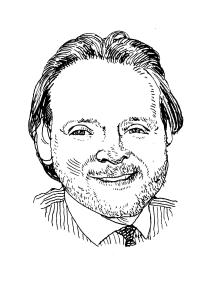
If you are a regular reader of Concrete Thoughts, you may be curious as to why a commercial real estate investment-sales broker like me spends so much time thinking about the state budget and the fiscal condition of the city and the state. Very simply, it comes down to real estate taxes and the impact the economic health of the state and city has on the fundamentals of our industry.
The April 1 deadline for a new state budget has come and gone without any agreement in Albany. The city budget, which is due June 30, is somewhat dependent upon the state budget; therefore, as the state budget is delayed, so too may be the city budget.
There are several political hot-potato issues being considered, not the least of which are the stifling public-sector employment contracts that are jeopardizing the long-term viability of our city and state. Given the considerable impact of these contracts on our balance sheets and the political implications for legislators who believe fundamental modifications of these contracts are necessary, many believe we may not see a budget agreement until after the fall elections.
Meanwhile, as state and city spending continues to rise, real estate taxes continue to skyrocket. Real estate taxes on multifamily properties are a perfect example. When I started in the business, in 1984, real estate taxes on walk-up apartment buildings averaged slightly less than $1 per square foot, at 97 cents. Taxes on elevator apartment buildings averaged slightly above $1 per square foot, at $1.04. Today, these levels range from $6 to as much as $13 per square foot, indicating 600 percent to 1,300 percent increases over a 26-year period.
This rise greatly exceeds the increase in revenue on multifamily buildings and even further exceeds rent-regulated increases permitted by the Rent Guidelines Board over the same period. One-year RGB increases aggregate to 97 percent over this period and total only 127 percent when compounded.
The real estate tax burden is, by any account, excessive. In fact, real estate taxes and real estate-related municipal tax revenues approached 50 percent of total tax revenue collections in New York last year. Real estate taxes, mortgage-recording taxes, transfer taxes, commercial rent taxes and hotel taxes totaled $17.86 billion out of our $36.99 billion of tax revenues collected. Unfortunately, real estate taxes will continue to face upward pressure to the extent that our Legislature is unable to agree on balanced budgets that reduce spending.
The history of our state budget is troubling. Last year, the budget was increased by $12.1 billion, of which $6.2 billion was federal stimulus money and $5.9 billion was simply additional spending. This year, there is no $6.2 billion stimulus package. In addition, though state legislators on both sides of the aisle claimed they would cut spending, add no new taxes and come up with a comprehensive plan to reduce our $9 billion budget deficit, the preliminary budgets that have been proposed increase spending from $131.8 billion to approximately $138 billion this year. This $6.2 billion increase means that, rather than having to fill a $9 billion deficit, we need to bridge an even greater shortfall.
ONE OF THE MAJOR reasons why spending continues to increase is that public-sector-organized labor contracts, which are such a significant component of city and state budgets, are oblivious to market conditions. Compensation, particularly for unionized public-sector workers, is significantly greater than average pay in the private sector. Additionally, fringe-benefit packages for public employees are excessive relative to those available in the private sector.
In the decade leading up to 2008, public employee compensation grew by 28.6 percent compared with 19.3 percent for private workers, according to U.S. Bureau of Labor statistics. The recession impacted nearly everyone in 2009, a year in which we had very modest inflation and record budget deficits. Notwithstanding these conditions, public-sector obligations steadily rose.
In 2009, state and local public employees received an average total compensation per hour of $39.66 versus $27.42 for those working in the private sector. This breaks down to $1.45 received for state and local government workers as opposed to $1 in pay and benefits for private-sector employees.
It was once thought that in order to encourage citizens to work in the public sector, enhanced compensation and benefits were necessary, because such jobs, while providing more job security, provided less compensation than found in the private sector. This trend has reversed itself, and these public payroll and pension obligations are bringing many municipalities to the brink of insolvency.
Clearly, unions play a vital role in our society. Ensuring that working conditions are fair and that ownership does not take unfair advantage of their workforce is critically important and socially justified. But there must be reality checks built into the system that allow for adapting to changing market and economic conditions.
Public-sector employees now earn salaries approximately 33 percent above what private-sector employees earn. Moreover, the real inequity for government workers is in their excessive benefits packages. Here public-sector employees are compensated 70 percent higher than what standard private-sector employees are offered. Government health benefits are more than twice as generous as those granted to workers in the private sector.
Importantly, nearly the entire benefits gap is due to unionized public employees (non-union public workers are paid similarly to private-sector employees). These overly generous pension plans are not sustainable, as stated by Michael Bloomberg last week: “The issue that we have is that the whole pension system is something we cannot afford.”



